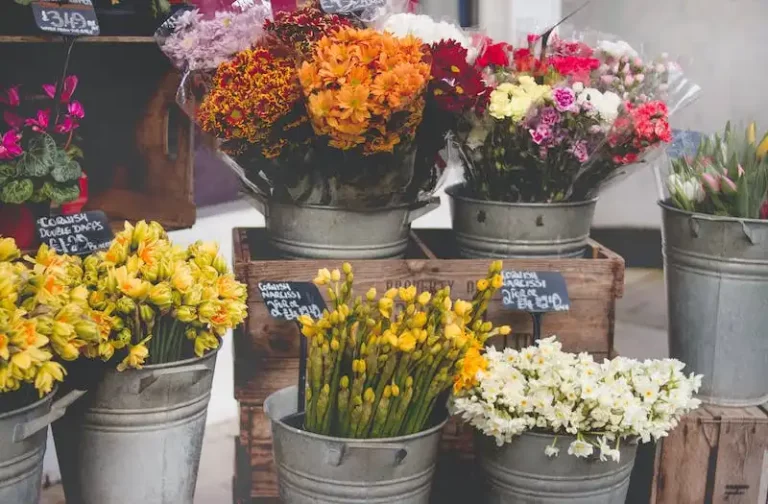If you’ve noticed your jade plant drooping, don’t panic just yet. There could be a number of reasons why your plant is looking a bit under the weather. In this article, we’ll explore the most common mistakes growers make when caring for their jade plants and provide solutions to help revive your drooping plant.
1. Poorly-Draining Soils
Jade plants thrive in well-draining soils, so if your plant is drooping, it may be a sign that the soil is holding too much moisture. To fix this, make sure you’re using a well-draining soil mix and avoid overwatering.
2. Sunburn
Jade plants love sunlight, but too much direct sunlight can lead to sunburn, which causes the leaves to turn yellow and droop. If your plant is placed in a spot with excessive sunlight, consider moving it to a location with filtered light instead.
3. Overwatering
Overwatering is a common mistake when it comes to jade plant care. These plants have succulent-like leaves that store water, so they don’t need to be watered as frequently as other houseplants. Allow the soil to dry out between waterings to prevent root rot and drooping.
4. Potting Shock
Repotting or transplanting your jade plant can cause it to go into shock, resulting in drooping leaves. To avoid this, always use a clean and sterilized potting mix and be gentle when handling the roots. Give the plant a few weeks to recover before expecting new growth.
5. Temperature Fluctuations
Jade plants prefer temperatures between 65°F to 75°F (18°C to 24°C), so if your plant is exposed to extreme heat or cold drafts, it may start drooping. Keep your plant in a location with stable temperatures, and avoid placing it near heating or cooling sources.
6. Pests and Diseases
Pests such as scale insects can attack jade plants, causing them to droop. Check your plant regularly for signs of pests and treat them accordingly. Additionally, diseases like root rot can also affect the health of your plant, so it’s essential to maintain proper hygiene and ensure the soil is well-draining.
7. Lack of Support
While jade plants are generally low-maintenance, they can still benefit from proper support. If your plant is drooping, consider staking it to provide extra stability. You can use stakes or even small dowels to gently prop up the stems until the plant becomes more robust.
By addressing these common issues and making the necessary changes to your care routine, you can soon revive your drooping jade plant and get it back to its healthy, vibrant self. Remember to always observe, learn, and emulate the natural environment in which these plants thrive.
Key Takeaways:
- Ensure your jade plant is in well-draining soil to prevent overwatering and root rot.
- Avoid excessive sunlight that can cause sunburned leaves.
- Water your plant properly by allowing the soil to dry out between waterings.
- Use clean and sterilized potting mix to prevent potting shock.
- Maintain stable and appropriate temperatures for your jade plant.
- Check for pests and diseases regularly and treat them as soon as possible.
- Support your jade plant by staking it until it becomes more robust.
With these tips in mind, you can keep your jade plant healthy and prevent future drooping episodes. Make sure to observe and adjust your care routine accordingly to ensure your plant thrives for many years to come.
How to Revive a Dying Jade Plant
If your jade plant is showing signs of drooping, wilting, or overall poor health, here are some steps you can take to help revive it:
1. Check for Proper Watering: One common cause of a droopy jade plant is improper watering. Make sure you are not over or underwatering your plant. Overwatering can cause roots to rot, leading to droopy leaves. On the other hand, underwatering can cause the leaves to become wrinkled and dry. To prevent these problems, water your jade plant thoroughly until the water starts to drain out of the bottom of the pot. Also, make sure your pot has proper drainage holes to avoid water pooling at the bottom.
2. Inspect the Soil: The soil your jade plant is growing in can also contribute to its droopy appearance. Make sure the soil is well-draining and not compacted. Poorly draining soils can cause root damage and lead to droopy leaves. Consider repotting your jade plant with a mixture of light and well-draining soil to promote optimal growth.
3. Provide Adequate Light: Jade plants love bright, indirect light. If your plant is not receiving enough light, it may become weak and droopy. Place your jade plant where it can receive bright, indirect sunlight for at least a few hours a day. Avoid placing it in direct sunlight, as this can cause leaf burn.
4. Maintain the Right Temperature: Jade plants tend to thrive in temperatures between 65°F and 75°F (18°C to 24°C). If the temperatures are too hot or too cold, your plant may suffer and show signs of drooping. Make sure to keep your jade plant in a place where it can experience optimal temperature conditions.
5. Check for Fertilization: Lack of proper fertilization can also cause a jade plant to become droopy. Make sure you are providing your plant with the necessary nutrients by fertilizing it regularly. Use a balanced fertilizer and follow the package instructions for how often to apply it. However, be careful not to over-fertilize, as this can also harm your plant.
6. Be Mindful of Structural Issues: Older jade plants can lose their natural structure and start to sag. If your plant is sagging, it may benefit from pruning or staking to help support its weight and regain its shape.
7. Repot if Necessary: If your jade plant has been in the same pot for a long time, its roots may be overcrowded and suffocating. Repotting can help provide fresh soil and more space for the roots to grow. Check if the roots are tightly packed in the pot and if they are starting to peek out from the drainage holes. If so, it’s time to repot your jade plant.
By following these steps, you can give your dying jade plant a fighting chance to revive and thrive once again!
Jade Plant Losing Leaves
If you notice that your jade plant is losing leaves, there could be a few reasons for this. It’s important to understand why this is happening and take the necessary steps to address the issue. Here are seven potential causes for your jade plant’s leaf loss:
- Overwatering: Overwatering is a common mistake that many jade plant owners make. Too much water can lead to root rot, which causes the leaves to become yellow and droopy. Make sure to water your jade plant only when the topsoil feels dry to the touch.
- Underwatering: On the other hand, underwatering can also cause leaf loss. When the soil is too dry, the leaves can become wrinkled and start to fall off. Be sure to water your jade plant thoroughly when the topsoil is dry, but avoid letting it sit in standing water.
- Poor drainage: Using a poorly-draining soil can also contribute to leaf loss. Jade plants prefer well-draining soil that allows excess water to escape. Consider using a mixture of soil and perlite to improve drainage.
- Wrong temperatures: Jade plants thrive in temperatures between 65°F and 75°F (18°C to 24°C). Extreme temperatures, whether too hot or too cold, can cause leaf loss. Keep your jade plant in an area where temperatures remain consistent.
- Inadequate light: Jades plants require bright, indirect light to thrive. If your plant is not receiving enough light, it may start losing its leaves. Find a spot near a window where your jade plant can get plenty of sunlight.
- Over-fertilization: While fertilizing your jade plant can be beneficial, overdoing it can lead to leaf loss. Make sure to carefully follow the instructions on fertilizer products and only fertilize your plant in the proportionate amounts.
- Pest infestation: Pests like scale insects can attack your jade plant and cause leaf loss. Inspect your plant regularly and take action if you notice any signs of infestation, such as small white or soft-bodied insects. Treat the infestation with an appropriate pesticide.
To remedy the leaf loss and help your jade plant recover, consider implementing the following fixes:
- Adjust your watering schedule to prevent overwatering or underwatering.
- Improve drainage by repotting your jade plant with a well-draining soil mixture.
- Ensure your jade plant is placed in an area with the ideal temperature and light conditions.
- Prune any dying or drooping leaves to encourage new growth.
- Address any pest infestations promptly by using appropriate pesticides.
By taking these steps and providing the necessary care, you can improve the overall health of your jade plant and prevent further leaf loss.
Jade Plant Losing Leaves Because of Over Watering or Under Watering
One common reason why jade plants start losing leaves is due to improper watering practices. Both over watering and under watering can cause leaves to turn yellow and gradually fall off.
Over watering happens when the plant receives excessive amounts of liquid. This can occur if the plant is not watered correctly or if it is planted in poor-draining soil. The excess water causes the roots to become waterlogged, leading to root rot. As a result, the plant is unable to absorb nutrients properly, causing the leaves to yellow and eventually drop off.
On the other hand, under watering happens when the plant does not receive enough water. Jade plants naturally store water in their leaves and stems, making them able to live in a dry environment. However, if the plant does not receive enough water, it will begin to lose leaves. Under watering can be caused by infrequent watering, watering too lightly, or placing the plant in a sunny location where it is exposed to direct sunlight for long periods of time.
To prevent over watering, it is essential to water the plant only when the top inch of soil is dry. This can be tested by sticking your finger into the soil surface. If the soil feels damp, watering is not necessary. Additionally, it is important to ensure that the pot has proper drainage holes to allow excess moisture to escape.
To prevent under watering, it is recommended to water the plant thoroughly when the top inch of soil is dry. This ensures that the water penetrates through the root zone and reaches the entire root system. However, it is important to avoid watering too frequently, as this can lead to root rot. It is also advisable to avoid placing the plant in direct sunlight for extended periods of time, as this can cause sunburn.
If your jade plant is already losing leaves due to over watering or under watering, there are a few solutions you can try. First, make sure to replace the soil with one that has optimal drainage, such as a well-draining cactus or succulent soil mix. Next, move the plant to a sunny location where it receives bright, indirect sunlight. Lastly, follow the watering tips mentioned above to provide the optimal water level for your jade plant.
Overall, proper watering practices are essential for the health of your jade plant. By avoiding over watering or under watering, you can prevent leaf loss and ensure that your plant remains healthy and vibrant.




